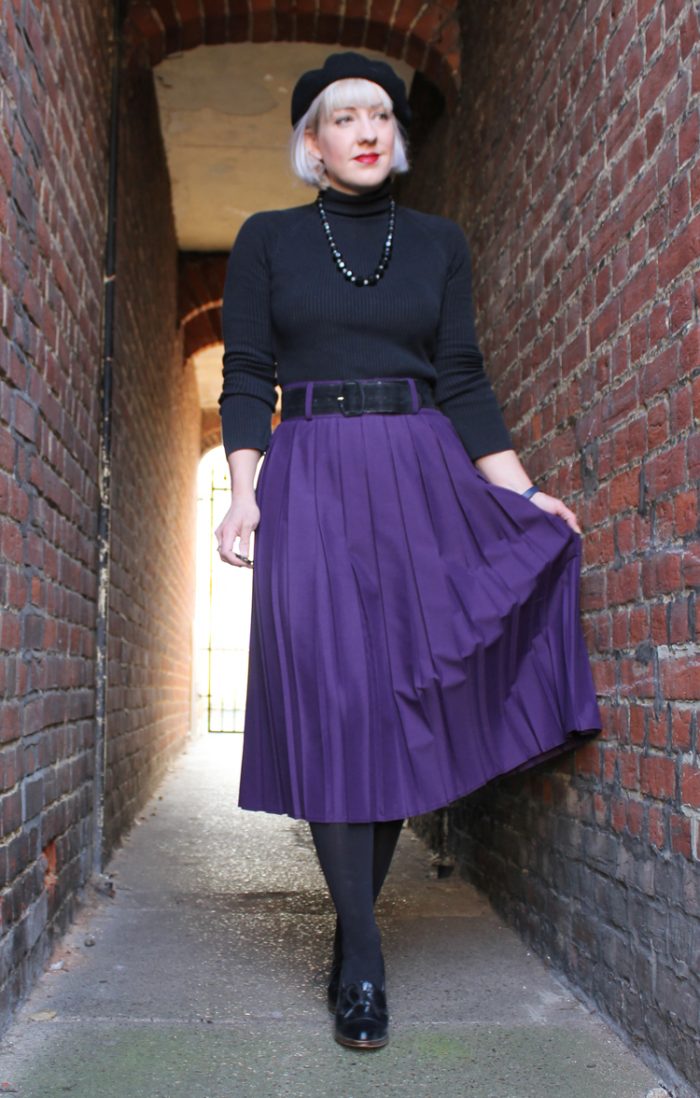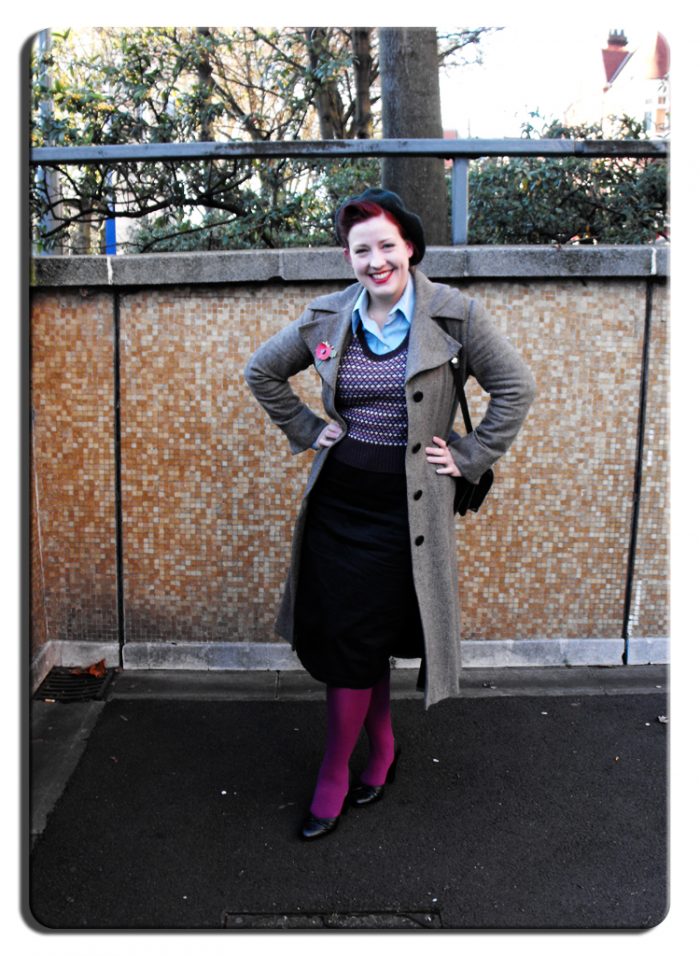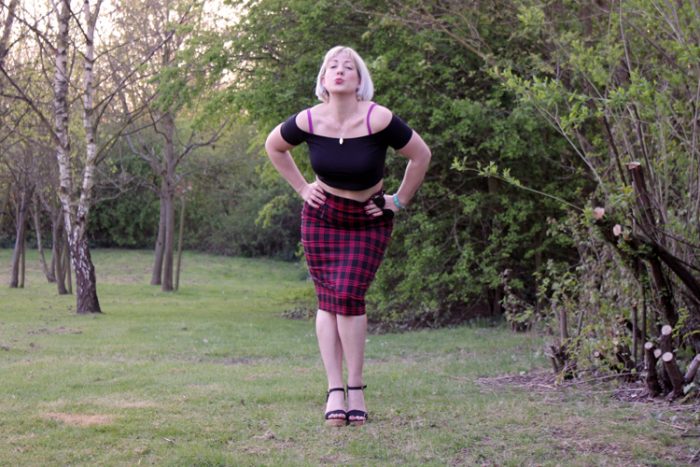Today I want to talk about the trend for Modest Fashion.
Increasingly I’ve started to notice some of the outfits I pin on my inspiration board marked with a Modest Fashion hash tag. It’s also been suggested that some of my own outfits are “Modest” since I favour midi skirts and not a lot of cleavage.
The term makes me really uncomfortable and irrationally irritated. Frankly there’s nothing more likely to make me want to start wearing cropped tops and mini skirts together than being accused of being a “Modest Dresser”.
I did a bit of Internet research on modest dressing. It seems to be largely accepted to be wearing clothing that covers your knees, upper arms and collarbones and isn’t too form-fitting, though modern interpretations don’t seem to necessarily demand flowing, just not skin-tight.
Like this OMG I’M MODEST.
At this point I should probably make clear that I’m talking about modest dressing from a purely fashion perspective, because it has lots of over laps with religion. I’m not religious, but if you chose to follow a religion and to follow its prescriptions on dress then that’s up to you and I defend your right to do it, whether I personally follow that religion or not. That’s really not an area I know enough about to comment on. So lets draw that line right there.
Modest dressing as a secular fashion has crept in from religion, but also seems to have sprung out of a reaction to some of the overtly sexualised versions of femininity that we see in popular culture.
4 years ago I wrote a piece about Feminism and Vintage Dressing. It wasn’t an academic thesis, more some observations on the kind of women I had met in the Vintage Sub Culture at the time (and I got some horrible personal attacks on Social Media after I wrote it, so please play nice today).
Whilst some of my views, and indeed the “vintage” world itself, have changed, I still stand by the core of it; how you chose to dress can be a powerful statement of how you view yourself and your relation to the world. I was thinking about the difference between dressing to fit into a mainstream mould of attractiveness, and dressing in a way that makes you feel good. At the time I felt that vintage dressing, pin up and burlesque was a way of showing two fingers to the established definition of “sexy” and an attempt to redefine it.
The world of vintage has changed a lot since then. It’s been co-opted more into mainstream looks and styles. My excitement at the time that I discovered vintage and the freedom I felt in creating those looks and not giving a damn what anyone else thought about me felt extremely liberating after years of trying to force my short and curvy body to somehow look tall, slim and leggy. When I posted outfit posts it wasn’t men who appreciated the looks, it was women, and it felt somehow creepy when men did comment.
On the surface modest dressing as a fashion trend appears to have a similar message. There are many positive stories out there about modest dressing and how women feel that it has improved their body image and freed them from worrying about inappropriate male attention. But this is what bugs me about the concept of modest fashion. At their heart the positive stories are all about women who felt solely defined on what their body looked like in relation to a particular ideal, or found they spent a lot of time being harassed by men because of their clothing. The idea that the answer to that problem is to cover up more bothers me a lot.
It’s not the actual clothing that I have a problem with. As a fashion movement modest dressing seems to involve a lot of my core wardrobe staples.
Sensible cardigans and midi skirts really are my bag, baby.
What bothers me is the fitting of women into a little box based on their appearance. That anything that’s not modest is somehow immodest, or shameful. That the very concept of modest fashion seems to be about men, not the women who wear it. Modest fashion relies on the idea that by flashing a bit of cleavage women are somehow “tempting” men into behaving in a certain way. In the story I linked to above a woman suggests she now only gets the occasional “street pervert or harrasser” suggesting that otherwise decent men are induced to harass women in public by the clothes they wear. A concept that is as insulting to men as it is to women.
Modesty in dress is a concept that relies on defining women by their body parts and which bits are or aren’t appropriate to show in public. It places more value on a womans outward appearance than on her values and suggests that appearance is somehow linked to morality and how she can expect to be treated.
Modest dressing is not dependent upon dressing appropriately for a given situation, I’m all for appropriateness. I wouldn’t wear jeans to a wedding, or open toed shoes in a factory, that’s kind of rude in the first instance and dangerous in the second. I also wouldn’t wear a crop top to a business meeting, I do question exactly why that is, but I understand there are social conventions of dress, and I’d be as surprised to arrive for a business interview to see a man in cut off shorts and a slogan t-shirt as I would a woman in a cropped top. Modest dressing applies solely to women and defines what is “appropriate” full stop, regardless of the situation.
If you realise you’ve accidentally become a modest dresser, then by all means continue. I’ve got a lot less modest in my old age, but I will continue to wear whatever the hell I want. Just please don’t suggest I’m ever modest.



21 comments for “Why Modest Fashion Bothers Me”